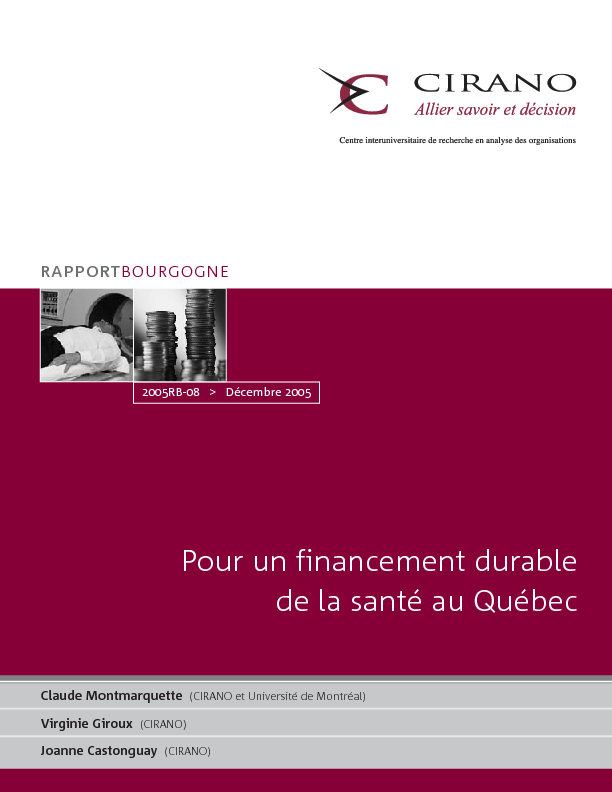Pour un financement durable de la santé au Québec
The Quebec health system is in a delicate situation. On the one hand, the annual growth rate of health expenditure over the past twenty years has been systematically higher than the GDP growth rate (by 1% on average). On the other hand, the government is finding it increasingly difficult to meet the demand for funding for health services. However, the demand for services continues to increase, with three factors exerting significant pressures on the demand for care: enrichment, an aging population and technological developments. As a result, health expenditures are taking up an increasing share of government budgets at the expense of their other jurisdictions.
For several years, the long-term sustainability of the health system has been at the heart of the concerns of Canadian, federal and provincial governments. In this context, several public commissions have recently been set up to study the issue in depth. When we look at their recommendations, we see that the majority of these commissions agree that our health system is not sustainable without profound changes in the means of financing it. This report assesses the many recommendations made by Canadian public commissions regarding their potential contribution to the financing of the health system, and more specifically their impact on the supply and demand for health services.
The impact of structural reforms
In the case of a private good or service, the price and quantity consumed are determined by the balance between supply and demand. In the case of a publicly funded service, it is the government's budget that determines the quantity of services offered; the offer is therefore fixed. In addition, the price charged is nil, so there is almost unlimited demand. This set of factors leads to significant rationing which, in terms of health, translates into waiting times for the population. In Quebec, these are long; many believe they are too long.
The structural reforms proposed by the various public commissions can be classified, according to their objectives, into three categories, namely those aimed at
- improving productivity
- control of the service offer
- demand reduction
The first two categories (which incidentally represent the vast majority of structural reform proposals) concern improving the supply of services. Interestingly, they are unanimously supported by the various Canadian public commissions1. However, their impact on the financing issue is limited since they are interested in the supply of services and the problem is one of growing excess demand. Any improvement in productivity and service quality will have an impact similar to an increase in the health budget. However, as demand is very much in excess, the effect of these reforms will be barely noticeable to the public.
The third category of proposed reforms includes only one proposal, to increase disease prevention initiatives. This proposal would have the effect of reducing the demand for services, which is excellent news in itself, since this effect would be the opposite of the effects of population aging and enrichment. However, this proposal is insufficient since its effect will only be felt in the long term. Moreover, since it has no effect on the price, which is nil, demand will remain significantly in excess.
In conclusion, if no measures are adopted to reduce demand in the short term, the system will remain in a state of crisis.
The impact of the financing reforms
Funding for the health system comes from two potential sources: the public and private sectors.
The impact of increased public funding. The sources of increased provincial public funding are fourfold:
- taxes
- federal transfers
- increased wealth - improved public financial management
Any policy that increases the tax burden on taxpayers is unlikely, as Quebecers already bear one of the highest tax burdens in the world. Moreover, since federal taxes are paid by the same taxpayers, an increase in federal transfers is not a solution. As for increasing collective wealth, it is extremely difficult to achieve, given the limited resources available to Quebec. In fact, the best option would be to adopt measures of fiscal prudence, starting with the repayment of the public debt. This would increase the government's flexibility. M




